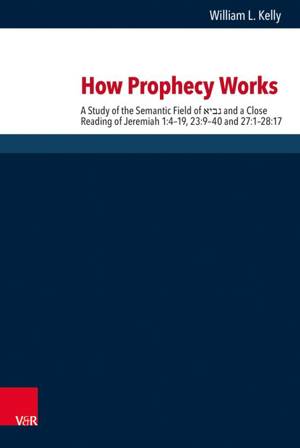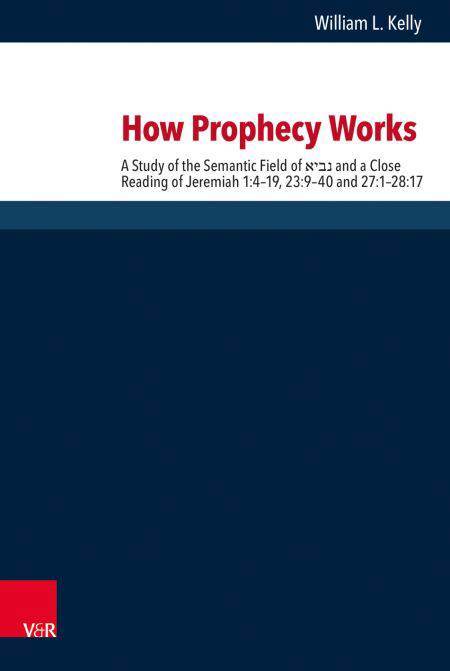
- Retrait en 2 heures
- Assortiment impressionnant
- Paiement sécurisé
- Toujours un magasin près de chez vous
- Retrait gratuit dans votre magasin Club
- 7.000.0000 titres dans notre catalogue
- Payer en toute sécurité
- Toujours un magasin près de chez vous
How Prophecy Works EBOOK
A Study of the Semantic Field of נביא and a Close Reading of Jeremiah 1:4–19, 23:9–40 and 27:1–28:17
William L. Kelly
89,00 €
+ 89 points
Format
Description
There is a longstanding scholarly debate on the nature of prophecy in ancient Israel. Until now, no study has based itself on the semantics of the Hebrew lexeme nābîʾ ("prophet"). This investigation by William L. Kelly discusses the nature and function of prophecy in the corpus of the Hebrew book of Jeremiah. It analyses all occurrences of nābîʾ in Jeremiah and performs a close reading of three primary texts, Jeremiah 1.4–19, 23.9–40 and 27.1–28.17. The result is a detailed explanation of how prophecy works, and what it meant to call someone a nābîʾ in ancient Israel. Combining the results of the semantic analysis and close readings, the study reaches conclusions for six main areas of study: (1) the function and nature of prophecy; (2) dreams and visions; (3) being sent; (4) prophets, priests and cult; (5) salvation and doom; and (6) legitimacy and authority. These conclusions explain the conceptual categories related to nābîʾ in the corpus. I then situate these findings in two current debates, one on the definition of nābîʾ and one on cultic prophecy. This study contributes to critical scholarship on prophecy in the ancient world, on the book of Jeremiah, and on prophets in ancient Israel. It is the first major study to analyse nābîʾ based on its semantic associations. It adds to a growing consensus which understands prophecy as a form of divination. Contrary to some trends in Jeremiah scholarship, this work demonstrates the importance of a close reading of the Masoretic (Hebrew) text. This study uses a method of a general nature which can be applied to other texts. Thus there are significant implications for further research on prophecy and prophetic literature.
Spécifications
Parties prenantes
- Auteur(s) :
- Editeur:
Contenu
- Nombre de pages :
- 332
- Langue:
- Anglais
- Collection :
Caractéristiques
- EAN:
- 9783647540733
- Date de parution :
- 08-12-19
- Format:
- Ebook
- Protection digitale:
- /
- Format numérique:

Seulement chez Librairie Club
+ 89 points sur votre carte client de Librairie Club
Les avis
Nous publions uniquement les avis qui respectent les conditions requises. Consultez nos conditions pour les avis.








